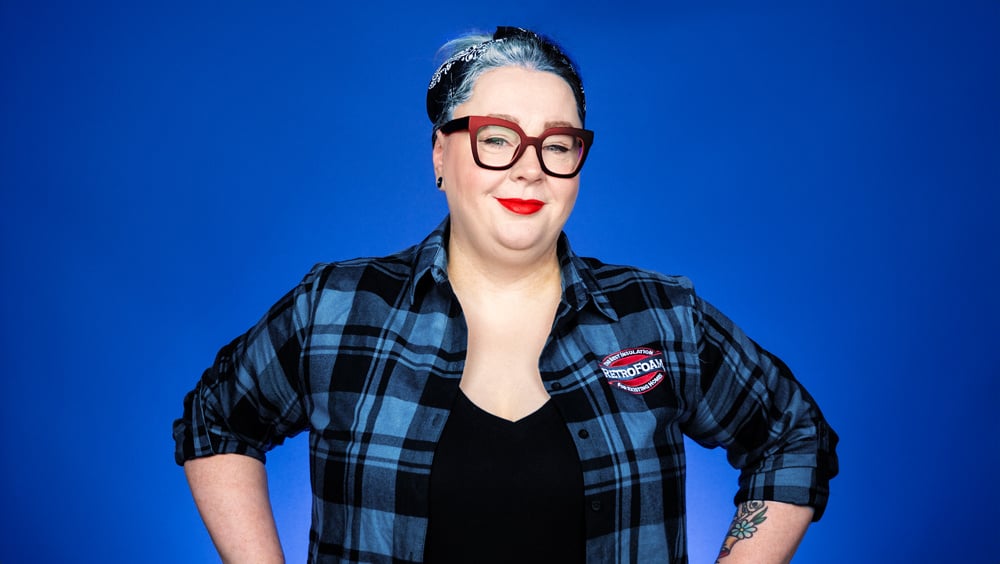4 Injection Foam Insulation Problems
injection foam insulation | RetroFoam insulation | home insulation problems | foam university


If you’re investing in your home’s insulation, the last thing you want to deal with is any major problems.
But, to err is human, and installer error when installing injection foam insulation can happen. Other problems can be sparked from previous issues in the home.
Luckily, RetroFoam installers have been specially trained to avoid problems like the cavity not filling completely and issues with mixing the injection foam insulation. With that being said, we can’t speak for other injection foam installers or the materials they offer.
Let’s dive into problems that can arise from injection foam insulation.
Injection Foam Insulation Problems
From injection foam insulation installer error to pre-existing issues with your home, here are some of the problems that can arise.
Drywall Can Bow or Crack
While this is rare, it can happen.
In some cases, this can happen if the installer overfills the wall cavity. RetroFoam installers are specially trained to know when the wall cavity is full to avoid overfilling and potential damage.
Some tripolymer injection foam problems, similar to RetroFoam, aren’t caused by installer error but instead by previous damage to the drywall. The majority of the times this happens, that previous damage is the culprit.
The pressure of the foam being injected into the wall cavity can cause the drywall to bow or crack if there is a weak spot. More specifically, if the drywall has been repaired in an area, it is more likely to bow or crack in that spot.
If there is previous water damage to the drywall, this is another weak spot where the injection foam could cause it to bow or crack.
Another thing to consider is if the drywall wasn’t installed properly.
If your drywall was only glued to the studs instead of properly attached with screws, it will likely push out when the foam is injected.
When the drywall isn’t hung center to center, there are large sections with no support. No support means it is more likely the drywall will bow or crack during the injection foam installation.
Paneling Can Pop Off
Paneling isn’t the sturdiest wall material to work with.
Wood paneling can bow or buckle due to humidity, the house settling, or if the nails come loose. All of these factors lend themselves to the paneling being challenging to work with.
There are ways for a skilled injection foam installer to work around these issues.
Taking care to be gentler to avoid any stops in the wall cavity pushing the injection foam hose out. Also, if the wall were to bow, in most cases, it can be tacked back into place with nails or drywall screws.
Poorly Mixed Injection Foam Insulation Leads to Issues
Off ratio mixed injection foam can cause issues in your walls.
Mainly, the off ratio foam has the potential for extreme shrinkage, leaving you with gaps in the wall. Those gaps will allow air to still move into and out of your home, not really fixing the comfort and energy efficiency issues you’re dealing with.
RetroFoam installers use specially developed rigs that help them mix the foam. They are also trained to check and test their mixed injection foam product every day.
The Injection Foam Doesn't Completely Fill the Cavity
An unskilled injection foam installer can miss filling the wall cavity completely, but it can happen to even seasoned pros as well.
This can happen because timing is off when injecting the foam, or the installer didn’t notice a fire stop in the cavity. The missed spots can lead to air leaks, regardless of the air seal created by the injection foam.
Either way, this problem is more about what the installer does when it comes to light that a spot could have been missed.
A good contractor will come out and take a look to get to the bottom of any missed spots. In many cases, those areas are touched up at no extra cost to the homeowner.
Choosing the Best Insulation Contractor for Your Existing Walls
Accidents can happen, but what it really comes down to is choosing an experienced contractor and who will make it right if the worst-case scenario occurs.
RetroFoam dealers across the country are specially trained to avoid the problems listed above and take the time to make sure every homeowner they work with is well taken care of.
If you would like to speak to a RetroFoam dealer in your neck of the woods, check out the Dealer Finder on our website.
Related Articles
Who is Not a Good Fit for RetroFoam Home Insulation?
How Do RetroFoam Installers Know the Cavity is Full When Insulating Existing Walls?
Will RetroFoam Insulation Installation Cause Drywall to Crack or Bow?
About Amanda Emery
Amanda previously has worked as a breaking news and crime reporter, TV news producer, and editor. As a journalist, she has won several awards from The Society of Professional Journalists - Detroit Chapter and the Michigan Press Association. Amanda uses her experience as a journalist to write content that will help educate homeowners on foam insulation benefits. When Amanda isn’t writing, she’s spending time with her husband Chris, daughter Lilith-Maeve, and rescued huskies Danger and Wendigo. She also loves knitting, making art, and cooking.



